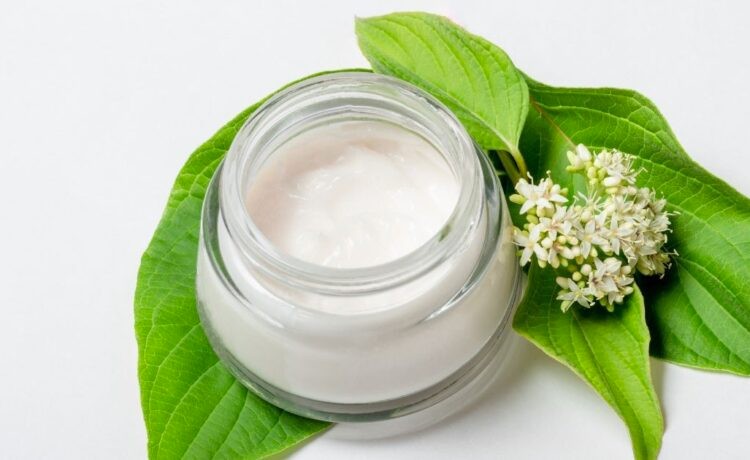Antiseptic cream is a topical medication designed to prevent infection and promote the healing of minor scrapes, cuts, and burns. These creams typically contain an antiseptic agent, which is a chemical that can prevent or stop the growth of microorganisms, such as fungi, bacteria, and viruses. Some antiseptic agents commonly found in antiseptic creams are chlorhexidine, benzalkonium chloride, and povidone-iodine.
Antiseptic creams may also contain other ingredients like anesthetic agents, which can help relieve itching and discomfort, and emollients that can help soothe and moisturize the skin. The specific composition of antiseptic products can vary based on the manufacturer and the intended use.
How does antiseptic cream work?
Antiseptic creams are effective in killing or preventing the growth of microorganisms on your skin. When applied to a scrape or cut, the cream forms a protective layer over the wound, helping to prevent the entry of bacteria and other microorganisms. The barrier also helps to keep the wound moist, which is essential for healing.
The antiseptic agent in the cream works by breaking down the cell membrane or cell wall of microorganisms which can cause them to die or stop reproducing. This can help to prevent the development of an infection and promote the healing of the wound.
Types of antiseptic creams
There are many kinds of antiseptic creams available in the market. Some of the most well-known types include:
- Bacitracin: Bacitracin is an antibiotic that is typically used with other antiseptics. It’s effective against many types of bacteria, including Staphylococcus and Streptococcus.
- Neosporin: Neosporin is a brand name for a combination of bacitracin, neomycin, and polymyxin B. The combination of antibiotics and antiseptics can work against various bacteria and is commonly used to prevent infection in minor wounds.
- Betadine: Betadine is an antiseptic agent that has proven effective against fungi, bacteria, and viruses. It is often used to cleanse skin before surgical procedures and disinfect and clean minor injuries.
- Polysporin: Polysporin is a brand name used for a combination of polymyxin B and bacitracin. The combination of antibiotics can be effective against various kinds of bacteria. It’s often used to prevent infection in minor wounds.
- Silver sulfadiazine: Silver sulfadiazine is an antiseptic cream that contains silver ions. These ions help fight fungi and bacteria and promote the healing of burns and other types of skin damage.
Choosing the right antiseptic cream
When choosing an antiseptic cream, it is crucial to consider the type of wound you’re trying to heal and the kind of microorganisms that may be present. For example, if you have a cut that is infected by Staphylococcus aureus, an antiseptic cream that contains bacitracin can be more effective than one that contains silver sulfadiazine.
It is also crucial to consider any sensitivities or allergies you may have to specific types of antiseptic agents. For instance, if you are sensitive to iodine, you may prefer to avoid antiseptic creams with povidone-iodine.
Additionally, if you have a severe wound or one that isn’t healing well, it’s crucial to seek medical treatment instead of relying on antiseptic cream. Your doctor may suggest a different type of medication or treatment that can speed healing and prevent infection.
Using Antiseptic Cream
When using antiseptic cream, it is crucial to follow the instructions on the label carefully. Here are some guidelines that you should keep in your mind:
- Clean the wound: Before applying the cream, clean the wound thoroughly with soap and water. This will help to remove debris, dirt, or bacteria that may be present.
- Use a small amount: Apply a small amount of antibiotic ointment for wounds on the area. Make sure you completely cover the area. Do not use too much cream, as this can prevent the wound from healing properly.
- Cover the wound: After applying the cream, cover the wound with a sterile gauze or bandage. This will keep the wound moist and clean, which is important for promoting healing.
- Change the bandage regularly: It is important to change the bandage regularly, atleast once a day, or more often if it becomes dirty or wet. This will help to prevent the growth of bacteria and promote healing.
- Keep an eye on the wound: Monitor the wound regularly for signs of infection, such as redness, swelling, or pus. If you notice any of these signs, consult a doctor immediately.
Conclusion
Antiseptic cream is a widely used first-aid treatment option for minor scrapes, cuts, and burns. They contain antiseptic ingredients that help prevent infections and speed up wound healing. A variety of antiseptic creams are available in the market, each having its own unique composition and intended use. When choosing an antiseptic product, it is crucial to consider the type of wound you’re treating, any sensitivities or allergies you may have, and any advice from your physician.
FREQUENTLY ASKED QUESTIONS
Q: What is antiseptic cream used for?
A: Antiseptic cream use is to treat and prevent minor skin infections. It can be used to disinfect and clean cuts, scrapes, or other small wounds and also speed up healing.
Q: What are the common ingredients found in antiseptic creams?
A: Antiseptic creams contain various ingredients, such as antifungal and antibiotic agents and other antiseptic agents like silver sulfadiazine and povidone-iodine.
Q: Can antiseptic cream be used on all types of wounds?
A: Antiseptic creams can be used for most minor wounds, such as scratches, cuts, or burns. But, it might not be appropriate for more severe and deep wounds. It is essential to consult a doctor if you are uncertain whether it is appropriate to apply an antiseptic cream to your particular wound.
Q: Do I need to clean the wound before applying antiseptic cream?
A: It is essential to clean the wound thoroughly with soap and water before applying antiseptic cream. This helps eliminate any debris, dirt, and bacteria that may be present and ensure that the antiseptic cream can work effectively.
Q: How often should I apply antiseptic cream to a wound?
A: The frequency of application of antiseptic cream depends on the severity of the wound and the type of cream being used. In general, it is recommended to apply the cream on the wound at least once or twice a day, according to the directions given on the product’s label or by a medical expert.
Q: Are there any side effects associated with using antiseptic cream?
A: Some people might have mild side effects, including redness, itching, or irritation at the site of application. In rare instances, an allergic reaction to the cream may occur. If you experience unusual symptoms, like difficulty breathing or swelling of the throat or face, seek medical attention immediately.
Q: Can antiseptic cream be used on children?
A: Antiseptic creams can be used on children, but it is crucial to use age-appropriate products and follow the label’s directions carefully. If you have concerns about using antiseptic cream on your child, consult a healthcare professional.
Q: How long does it take for a wound to heal using antiseptic cream?
A: The time it takes for a wound to heal with an antiseptic cream depends on the severity of the wound and the capacity of healing of the individual. Most minor wounds can take anywhere between a couple of days to one week to heal after using antiseptic cream. However, if the wound is severe or if an infection has developed, it may take longer to heal. It is crucial to monitor the wound regularly and consult a doctor if the wound is not showing any signs of improvement after a few days.







